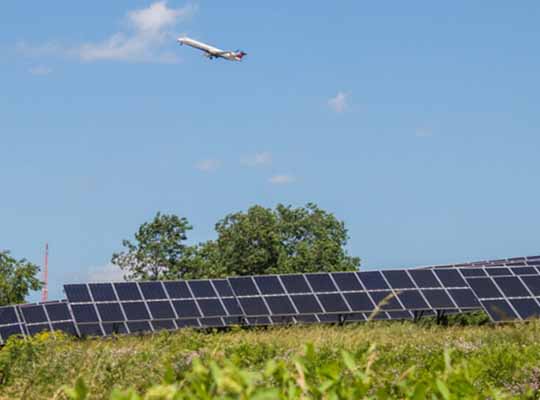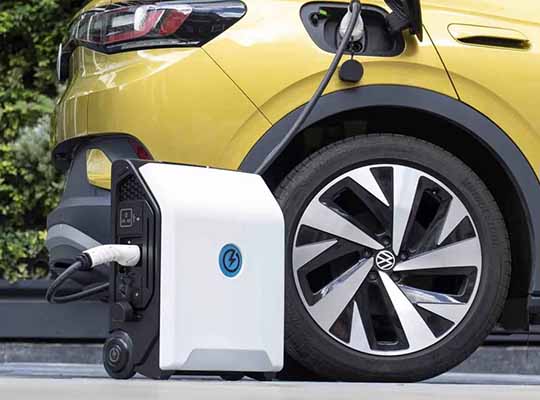John F. Kennedy International Airport’s future New Terminal One will be powered by more than 13,000 solar panels along with natural gas fuel cells, reducing carbon emissions and making the facility more resilient in the event of a power outage.
Officials in New York announced the plan last week, saying the 11.3-megawatt microgrid is capable of completely powering the new facility even if the main power grid goes down.
The New York microgrid announcement comes nearly 19 months after Pittsburgh International Airport officials flipped the switch on its 23-megawatt microgrid—the first in the world to completely power an airport using five natural gas-fired generators and approximately 10,000 solar panels.
In 2022, PIT’s microgrid saved over $1 million in utility costs and reduced carbon dioxide emissions by approximately 6.5 million pounds regionally. PIT’s solar array is built atop a closed landfill, which supports PIT’s sustainability goals by repurposing land that is otherwise unsuitable for development initiatives.
Officials hope to double the number of solar panels in the coming years.
“I’m really pleased to see the idea of microgrids taking hold at airports in the U.S. It’s a way to provide more sustainable energy and more resilient power, which is crucial for 24/7 operations at airports,” said Tom Woodrow, Senior Vice President of Engineering & Intelligent Infrastructure at PIT. “We’ve hosted visits and calls from several other airports looking to build something similar.”
New York officials broke ground on the 2.4-million-square-foot New Terminal One project in September. The first 14 gates are expected to open in 2026, with the remaining nine open by 2030.
“This New Terminal One infrastructure project illuminates a new pathway to decarbonizing the air transportation sector,” said Juan Macias, CEO of AlphaStruxure, the company that will design, construct and operate JFK’s microgrid.
The network will deliver greenhouse gas emission reductions of 38 percent over grid-sourced energy, officials said. About 7.66 megawatts will come from rooftop solar with the remaining 3.68 megawatts coming from fuel cells, according to AlphaStruxure.
Macias told The Hill that the fuel cells will be powered by natural gas with hopes to transition to biogas or hydrogen in the future.
PIT’s microgrid has gotten its share of attention. Forbes magazine called PIT’s microgrid “tough to duplicate,” and it has been recognized with the Innovation Award from Airports Council International and Fast Company Magazine’s World Changing Idea award.
Paul Hoback, Chief Development Officer at PIT, also spoken about the microgrid when he remotely testified before the U.S. House Transportation & Infrastructure Committee’s Subcommittee on Aviation at a hearing focused on addressing climate change at airports.
Sustainability at PIT extends far beyond the microgrid. The airport is working on alternative fuel strategies, repopulating the honeybee population, and completing its own Terminal Modernization Program, which includes a goal of LEED Silver Certification.













